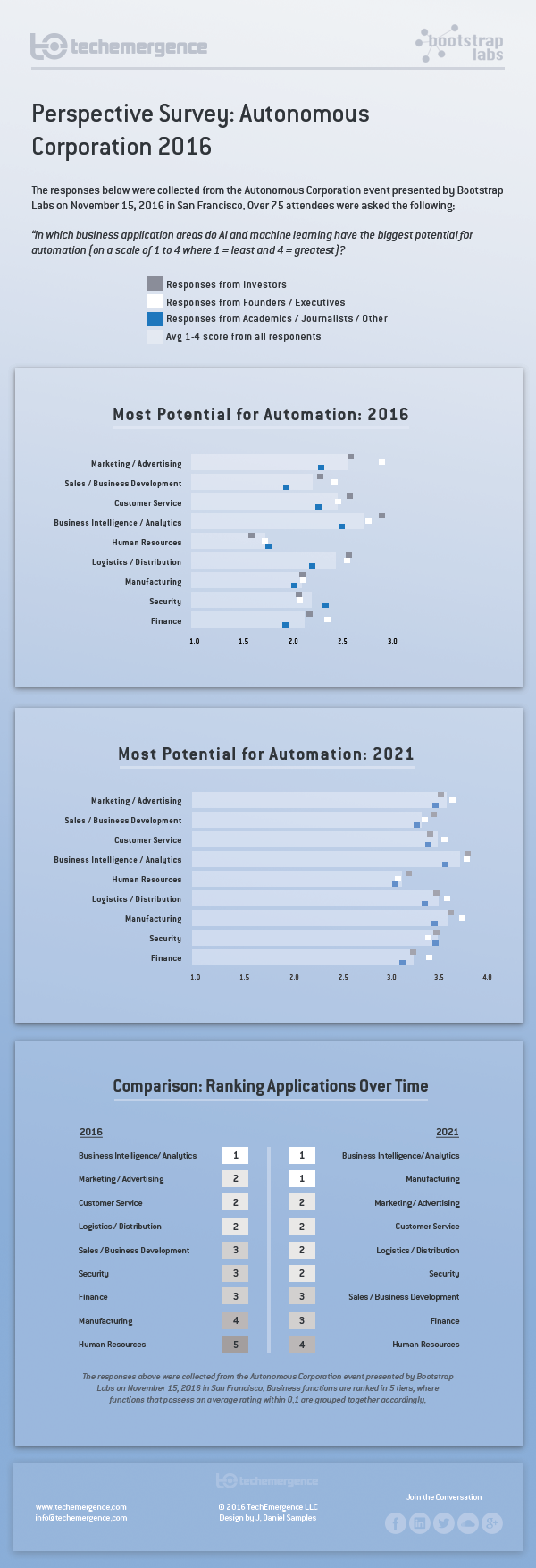Job Automation Predictions from 2016 Silicon Valley Survey
This article was originally published on http://techemergence.com/ and it`s the result of a collaboration between BootstrapLabs and Techemergence.
Job automation predictions from an individual expert typically draw from years of academic research experience, or time “in the trenches” of industry. With growing interest and speculation on the job market of the next decade, we set out to garner a perspective as to what Silicon Valley thinks about the possibilities of automations in various business tasks.
We wanted to know – what work functions have the most potential for near-term automation?
In the infographics and article below, we explore the survey responses from nearly 80 Bay Area investors, founders, and tech folks – on which business functions have the greatest potential for automation today, and in the coming five years ahead.
Together with San Fransisco-based venture firm BootstrapLabs, we designed a simple survey that was handed out during their “Autonomous Corporation” event in November 2016. Below are the responses to this survey, and our interpretations and gleaned ideas:
Automation Predictions – Current
It is interesting to note all three groups of respondents considered business intelligence to be the business function with the most current automation potential.
Similarly, investors, founders, and “other” respondents were also unanimous in ranking human resources as the business function with the least current automation potential. It seems plausible that job automation in the HR department is less likely than the BI department, and that the predictions of our respondents would reflect this.
A uniform response for “highs” and “lows” was not expected, and seems to signal that there is strong shared sentiment around those two particular business functions.
While there seemed to be relative consensus around business intelligence, human resources, and marketing, other business functions – such as security and finance – didn’t have the same uniform optimism or pessimism across respondent groups.
Automation Predictions – 5 Years Out
It seemed highly unlikely from the outset, but one major trend resounded from the “Current” survey section to the responses in the “5 Year Future” section: Business intelligence again ranked highest amongst all options by all three groups, and human resources again ranked dead last for all three groups as well.
Based on the survey size (78 respondents, about one third investors, one third founders, one third “other”), this is by no means conclusive. There are no “conclusive” predictions in the first place (good startup idea though, someone should work on that). Rather, this seems
Manufacturing stands out as a major outlier from “current” to “5 years out.” Ranked among the lowest areas of current automation, manufacturing jumped ahead to nearly overtake business intelligence for the area of most optimism in the coming five years. It is possible that this is due to the heavier hard-cost investment of industrial manufacturing processes as compared to domains like business intelligence, marketing, of finance – where “automation” never has to reach it’s robot arms into the real world.
It is interesting to note that the current industry trends in funding AI and machine learning doesn’t seem to provide much evidence for heavy investment in manufacturing, so we might presume that the optimism of the investors and founders in the crowd spawned from another source.
Read more at: http://techemergence.com/job-automation-predictions-silicon-valley-survey/

